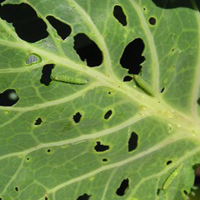Evaluation of a first-event sampling model for monitoring cabbage pests

Accepted: 3 February 2021
HTML: 10
All claims expressed in this article are solely those of the authors and do not necessarily represent those of their affiliated organizations, or those of the publisher, the editors and the reviewers. Any product that may be evaluated in this article or claim that may be made by its manufacturer is not guaranteed or endorsed by the publisher.
Authors
First-event sampling models for monitoring diamondback moth Plutella xylostella (Lepidoptera: Plutellidae) and small white butterfly, Pieris rapae (Pieridae) are used in integrated production systems of cabbage. Decision-making accuracy and reduced labour needs of those models were unknown compared to fixed-sample monitoring. This we addressed through computer simulations of the currently most used first-event sampling plan for cabbage in DPR Korea. Indeed, this sampling plan in five subplots of a cabbage field at a sampling limit of a maximum 10 plants each, appeared less labour intense than many fixed-sample monitoring plans. However, only a medium accuracy of infestation estimates and correct decision-making for or against pest control was achieved, particularly at high pest densities. If accepting such medium accuracy, the current sampling plan could be reduced from five to three subplots at a sampling limit of 10 plants each, or to a maximum of five assessed plants per each of five subplots, this is, without further loosing accuracy whilst saving labour. Such sampling requires little investment in time and might be therefore applied and validated across more cabbage productions systems of East Asia. Ultimately, first-event sampling, as other sampling plans will remain a compromise between accuracy and practicability.
Supporting Agencies
Pyongyang Agricultural College of Kim Il Sung University.How to Cite
PAGEPress has chosen to apply the Creative Commons Attribution NonCommercial 4.0 International License (CC BY-NC 4.0) to all manuscripts to be published.

 https://doi.org/10.4081/jear.2021.9448
https://doi.org/10.4081/jear.2021.9448



